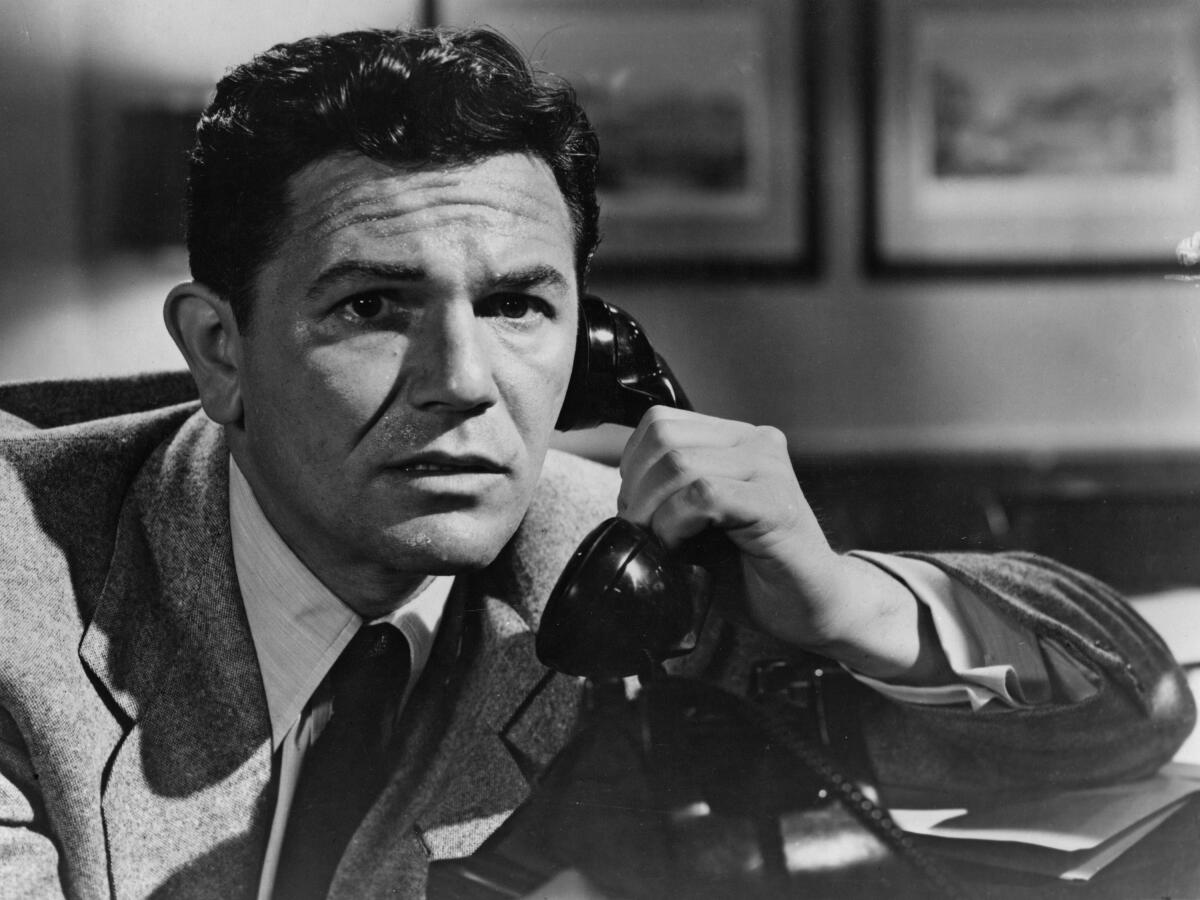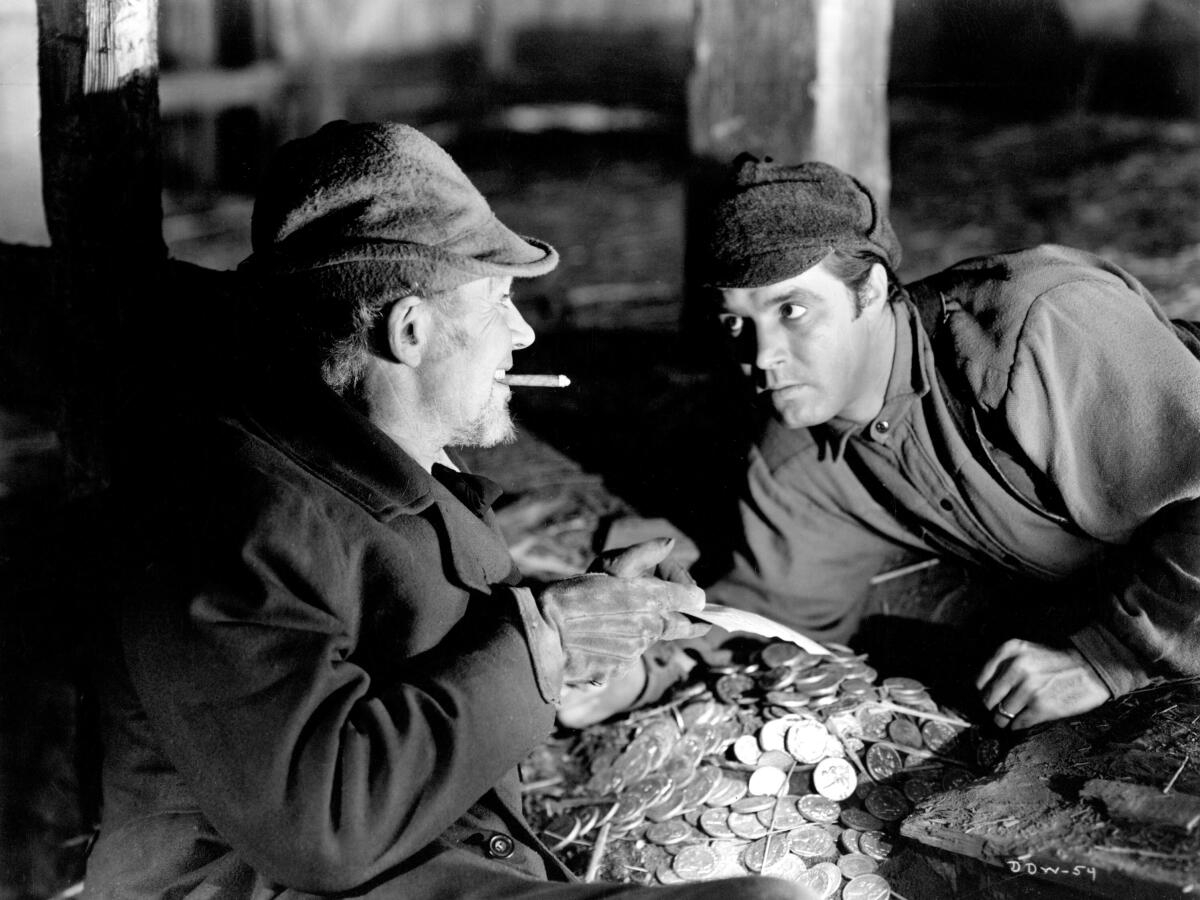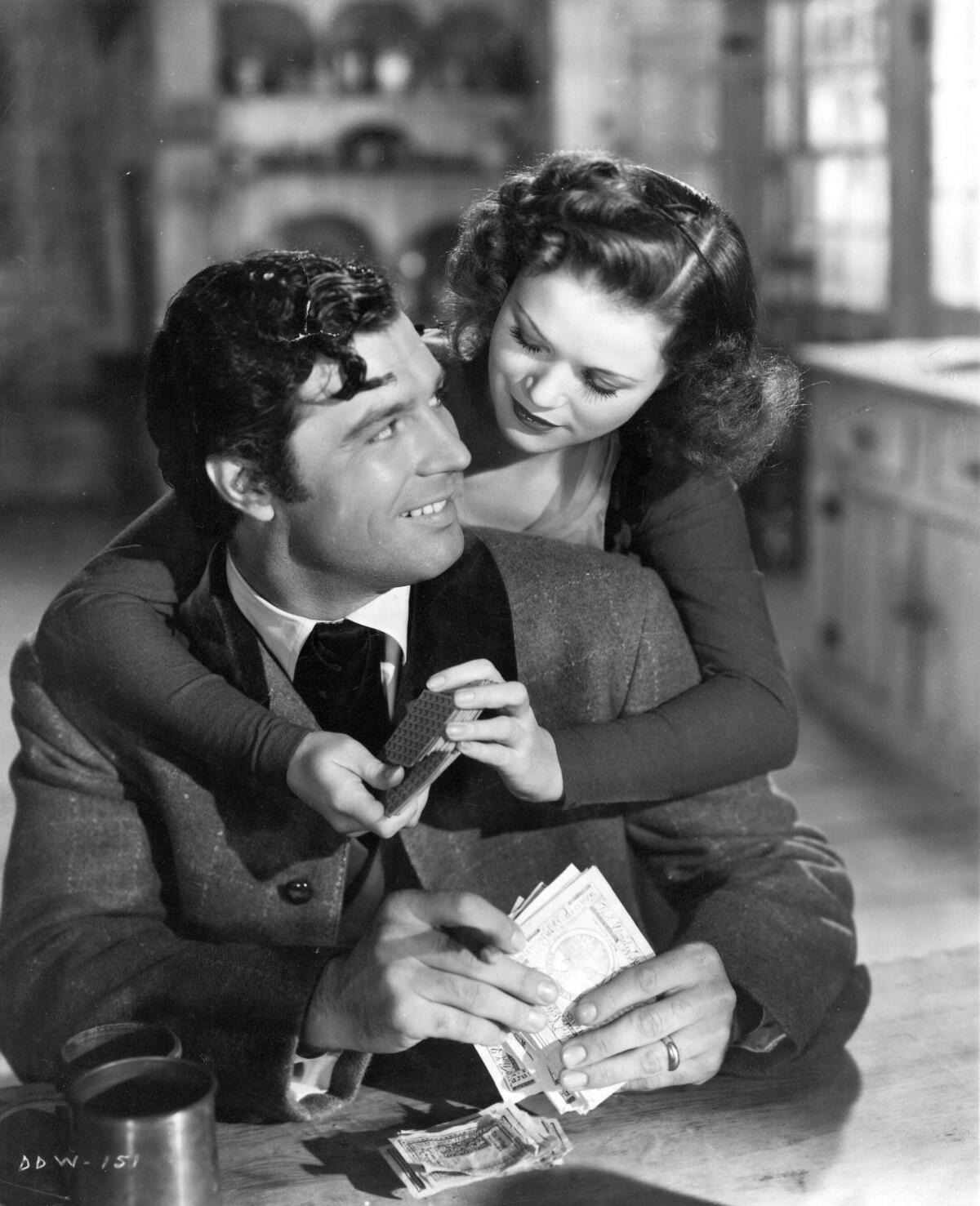The rare films you shouldn’t miss at the 2022 UCLA Festival of Preservation

Just when I thought I was out, they pull me back in.
No, unlike Al Pacino in “The Godfather III,” I’m not a distraught Mafioso pulled back into a deadly life of crime, I’m a disconnected film critic pulled back into the world of deadlines by one of the great loves of my professional life: UCLA Film & Television Archive’s Festival of Preservation.
Now firmly ensconced at the Billy Wilder Theater at the Hammer Museum, the festival returns the weekend of May 20 to 22 with one major new twist. Thanks to a gift from an anonymous donor, all of its showings are free of charge (though reservations are highly recommended).
Now in its 20th edition, the festival is still at its core — as Talking Heads would have it — same as it ever was. Time and again, no movie event in Los Angeles has excited me more than this one, and this latest iteration is no exception.
The festival’s purview is legendarily wide, so much so that anyone who cares about film will find their taste catered to this year, whether it’s the Harold Lloyd-Preston Sturges collaboration “The Sin of Harold Diddlebock,” a tribute to Betty White, Laurel and Hardy’s “Scram!” or the Cockettes’ anarchic “Tricia’s Wedding.”
The festival not only showcases the restoration of classic films to pristine condition, it delights in shining a light on hidden gems and unexpected corners of the cinematic universe, items you had no idea existed, let alone expected to ever see on a big screen.
An eight-minute case in point this year is 1938’s “Buzzy Boop at the Concert,” a wild and crazy Fleischer Studios cartoon featuring Betty Boop’s uninhibited country cousin Buzzy.
One of only two shorts Buzzy appeared in and unseen for 85 years, this nifty item resulted from an unexpected collaboration between UCLA, Paramount Pictures and Gosfilmofond, the Russian film archive where a print was discovered in 2019.
Though I love the entire preservation event, I’m particularly fond of the return to original glory of black-and-white films from Hollywood’s Golden Age.

Two films especially caught my eye this year, including the festival’s opening night attraction, 1941’s “All That Money Can Buy,” better known by its alternate title “The Devil and Daniel Webster,” a name that was changed out of fear that audiences would confuse it with the earlier “The Devil and Miss Jones.”
Directed by William Dieterle, based on a short story by screenwriter Stephen Vincent Benet and featuring an Oscar-winning score by the protean Bernard Herrmann, “Money” is set in the 1840s in the hardscrabble New Hampshire-Massachusetts borderlands.
Farmer Jabez Stone (James Craig) is having a heck of a time staying solvent. Unfortunately for him, Mr. Scratch, a.k.a. the devil himself (an insinuating Walter Huston at his dark, cackling best), just happens to be in the neighborhood, and before you can say “sign here in blood,” he has made a deal for the farmer’s soul.
Deals with the devil have a habit of turning out badly, but Jabez is fortunate to have the great populist orator and legislator Daniel Webster (Edward Arnold) on his side. A treatise on human frailty, greed and the possibility for redemption, “Money” manages to be both literary and unfailingly energetic.
If you want to see Hollywood star power in action, you could not do better than another black-and-white gem, 1949’s “Force of Evil,” with John Garfield in the leading role.
Co-written by Abraham Polonsky in his directing debut, “Evil” casts Garfield as an up-from-poverty New York lawyer. He’s the kind of guy who keeps a secret telephone in a locked desk drawer because he’s fronting for the mob as it attempts to turn the numbers racket into a legitimate lottery.
Few actors hold the screen with Garfield’s intense, mercurial authority, and he’s fortunate to face off here against Thomas Gomez as his disapproving older brother. Their corrosive interchanges, crackling with long-standing mutual resentments, set the tone for this fatalistic, socially conscious noir. In but three years, sadly, Garfield would be dead of a heart attack at 39.
Also worth a look on the noir side is 1949’s “Cover Up,” a quirky melodrama about a top-notch insurance investigator (Dennis O’Keefe) who arrives in a small town to look into a suicide and begins to suspect that a murder has taken place. O’Keefe’s arch interchanges with the town’s “you city fellas are always in a rush” sheriff (a fine William Bendix) are an unexpected highlight.
Two areas that I don’t always focus on proved compelling in this year’s festival, one being television and the other documentary.
Though it’s only 26 minutes long, 1955’s “The Challenge,” an unsold TV pilot, held me totally, a tribute to the combined talents of an extraordinary creative team that included writers Reginald Rose and Rod Serling, director Sidney Lumet and star Jack Warden.

Warden, just a few years prior to his breakthrough role in “12 Angry Men,” plays an unassuming school bus driver whose conscience won’t let him sign a McCarthy-era loyalty oath and faces the likely loss of his job as a result. The issues raised by his actions seem as vital and relevant today as they did more than half a century ago.
Also of note on the TV side is the 1964 Hallmark Hall of Fame version of “The Fantasticks,” a musical love story that played off-Broadway for 17,000-plus performances over more than 40 years. Bert Lahr and Stanley Holloway play neighbors who pretend to be enemies so their children will fall in love, with the pioneering Mexican actor Ricardo Montalban starring as the mysterious El Gallo.
On the documentary side, look for Haskell Wexler’s pioneering “The Bus,” following a group of concerned citizens who take a Greyhound Scenicruiser from San Francisco to Washington, D.C., to participate in 1963’s March on Washington. On the same bill is another cinéma vérité gem, 1968’s “Hey, Mama,” a slice-of-life look at Venice’s Black neighborhood of Oakwood.
Preserving all aspects of film history is what this exceptional festival — whose motto for 2022 is “See the Bigger Picture” — is all about.
2022 UCLA Festival of Preservation
Festival schedule
May 20:
7:30 p.m. “All That Money Can Buy”
10 p.m. “Cover Up”
May 21:
11 a.m. “Scram!”; “Blondie”
1:30 p.m. “Buzzy Boop at the Concert”; “Inner Sanctum”
3:15 p.m. “Hey, Mama”; “The Bus”
5 p.m. “The Challenge”; “Rod Serling’s Wonderful World of … ‘Propaganda’”
7:30 p.m. “Force of Evil”
9:30 p.m. “Paper Moon”; “The Argyle Secrets”
May 22:
11 a.m. “Sinbad the Sailor”; “Topper Returns”
1:30 p.m. “Hallmark Hall of Fame: The Fantasticks”
3 p.m. “Greetings from Washington D.C.”; “Tricia’s Wedding”
5 p.m. “Born Into Brothels: Calcutta’s Red Light Kids”
7:45 p.m. Betty White Tribute: “U.S. Steel Hour: ‘Scene of the Crime’”
9:15 p.m. “The Sin of Harold Diddlebock”
More to Read
Only good movies
Get the Indie Focus newsletter, Mark Olsen's weekly guide to the world of cinema.
You may occasionally receive promotional content from the Los Angeles Times.










